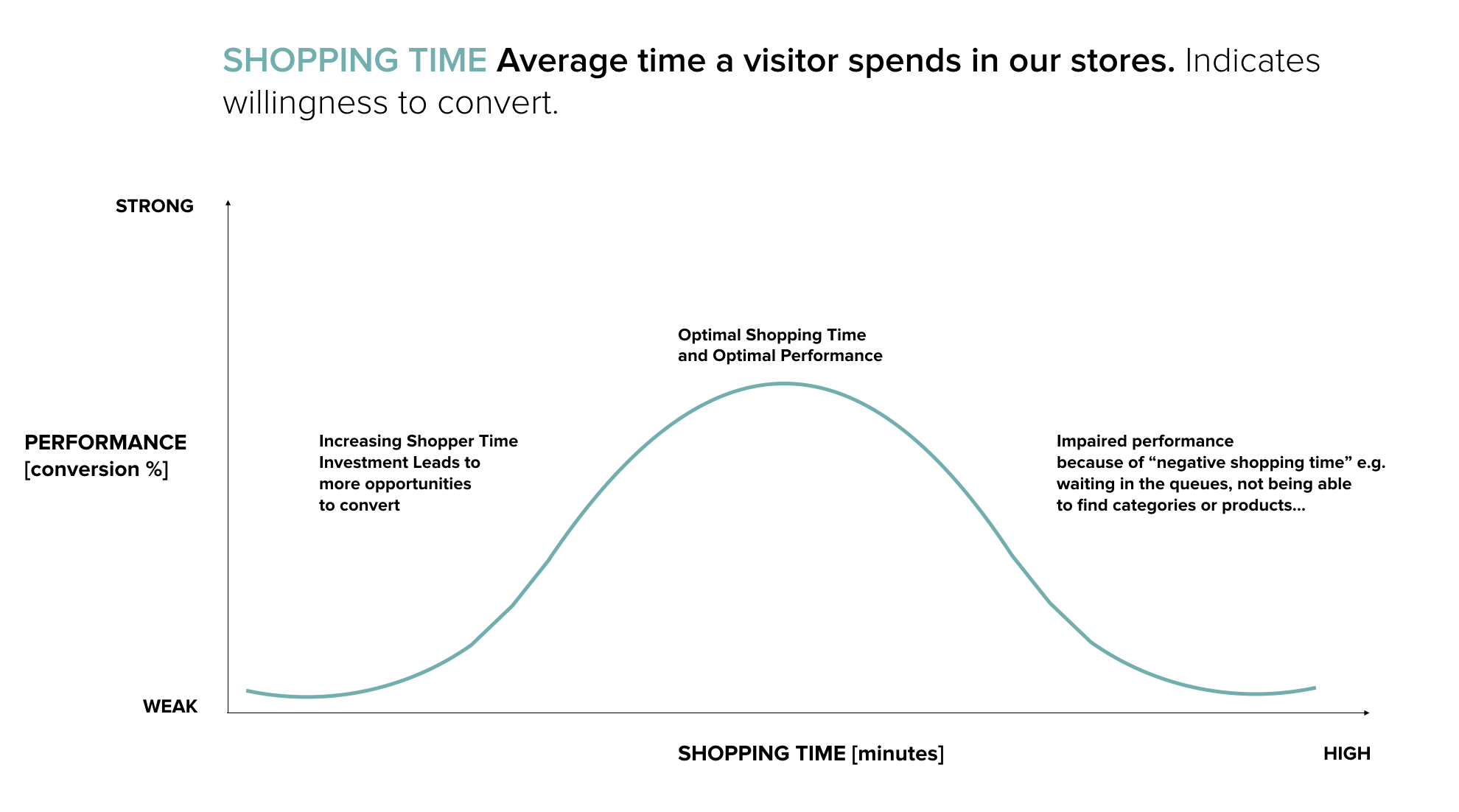If you would ask 100 retailers what is the most important metric they track on the daily level, 99 of them would shoot: "conversion". When you would ask them what is the metric which is influencing conversion the most, you would probably get 99 different answers. From Oxford street flagship stores, the department store in Geneva, mall stores in Stockholm and small stores in Den Haag we have been able to pinpoint the biggest and most accurate predictor of conversion: Shopping Time.
We have examined hundreds of data points to correlate Shopping Time versus Conversion and have seen that every time that we see an increase in Shopping Time, we also notice an increase in Conversion. Increasing Shopping Time is also increasing the number of opportunities to convert. However, there is a breakout point which we call Negative Shopping Time. Negative Shopping Time causes impaired performance due to the factors we are going to explore in this article.

When a shopper enters the store, there are two most significant resources which he brings to the retailer: money and time. Time seems to be most neglected, but the most significant predictor of the conversion. Despite this fact, retailers are extremely proficient in prolonging consumer journeys to the point of no return. Let's investigate most common errors retailers are making in their stores which are not contributing to healthy shopping time.
Lack of clear navigation
At the moment of landing on any web shop which does not have clear navigation (e.g., menu), there is a higher probability that consumer bounces from the site. The same thing happens in the 'real' store. Faced with lack or no navigations shoppers are left on their own to find wanted category or product. This creates confusion and shoppers have to spend more time in finding what they want. As a result, shopping time is increased, however, conversion is lacking.
Consumer right adjacencies
When retailers want to increase their UPTs, they often rely on old tricks which propagate placing lower priced products in the vicinity of main categories. In theory, this results with higher UPTs. However, this kind of over-exposure of promo products sometimes leads shoppers to buy promos instead of premium product. Good category planning should be more focused on what customers want to buy, not on forcing customers into choices which could increase a particular metric like UPT, and not taking into the account total store profitability.
Waiting in the queues
In one of a series of memorable advertisements for which it has become justly famous, Federal Express (the overnight package delivery service) noted that: “Waiting is frustrating, demoralizing, agonizing, aggravating, annoying, time-consuming and incredibly expensive.” This fact surely resonates in retail stores. What is more agonizing than waiting to pay, especially compared with Amazon's one-click payments. Even worse, in clothing stores, if one has to wait too long in front of the fitting room, one can start having the negative judgment about the overall quality of services and even products. Great retailers are measuring queue times (Negative Shopping Time) and paying attention to the both realities of waiting times and how are those realities experienced to alleviate the pain customers could feel when waiting too long.
At Monolith, we are all about Shopability for Profitability. We believe that fundamental aspect of Shoppable store is properly managing Optimal Shopping time with clear navigation, optimal product placement, and well-managed queues. When these factors are combined, shoppers will respond to positive experience and turn into more loyal ambassadors of both our brands and shops.